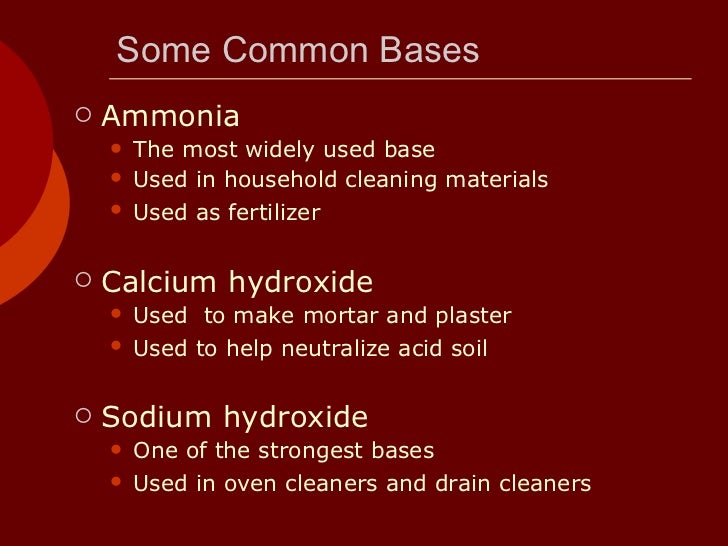ACIDS AND BASES

ACIDS
- It comes from the Latin word "acidus", which means "sharp" or "sour".
- A solution that has an excess of H+ ions.
- It loses its acidity when they are combined with alkalies.
- Strong Acids are dangerous and can burn your skin.
- It changes the colour of LITMUS :
Blue ---> Red
Examples of Acids:
1. Vinegar
3. Citrus Fruits
2. Stomach Acid (HCl)
Strong Acid:
The pH value is below 3.
A strong acid is one which is virtually 100% ionised in solution.
Weak Acid:
An
acid that only partially ionizes in an aqueous solution. This means that
not every molecule breaks apart. Weak acids usually have a pH close to 7
(3-6).
BASES
- A solution that has an excess of OH- ions.
- Another word for base is "alkali".
- It feels slippery.
- It become less alkaline when they are combined with acids.
- It changes the colour of litmus:
Red --- > Blue
Examples of Bases:
1. Sodium hydroxide(NaOH, strong base)
2. Ammonia

Strong Base:
The pH value is above 10.
Weak Base:
A base that only partially ionizes in an aqueous solution. This means
that not every molecule breaks apart. Weak bases usually have a pH close
to 7 (8-10).
Common Acids
Acetic acid : vinegar, acetate
Acetylsalicylic acid : aspirin
Ascorbic acid : vitamin C
Carbonic acid : soft drinks, seltzer water
Citric acid : citrus fruits, artificial flavorings
Hydrochloric acid (HCl) : stomach acid
Nitric acid : fertilizer, explosives
Sulfuric acid : car batteries
Common Bases
Aluminum hydroxide : antacids, deodorants
Ammonium hydroxide : glass cleaner
Calcium hydroxide : caustic lime, mortar, plaster
Magnesium hydroxide : laxatives, antacids
Sodium bicarbonate/sodium hydrogen carbonate : baking soda
Sodium carbonate : dish detergent
Sodium hydroxide : lye, oven and drain cleaner
Sodium hypochlorite : bleach

Post a Comment
Post a Comment